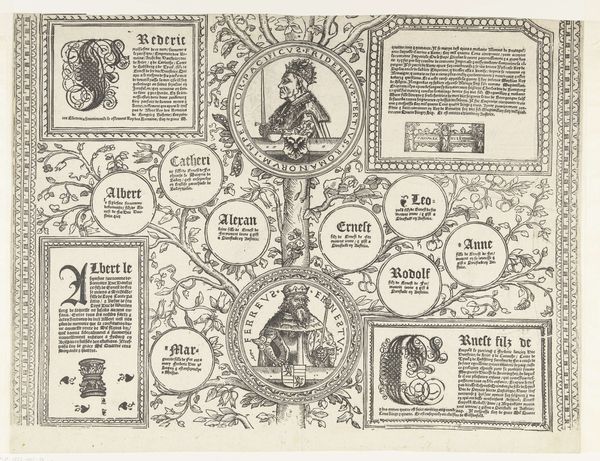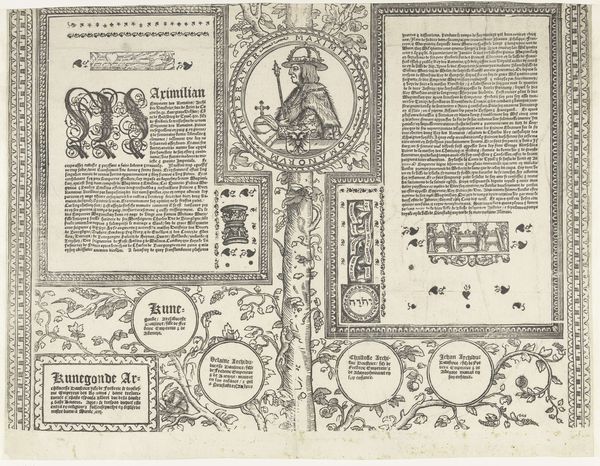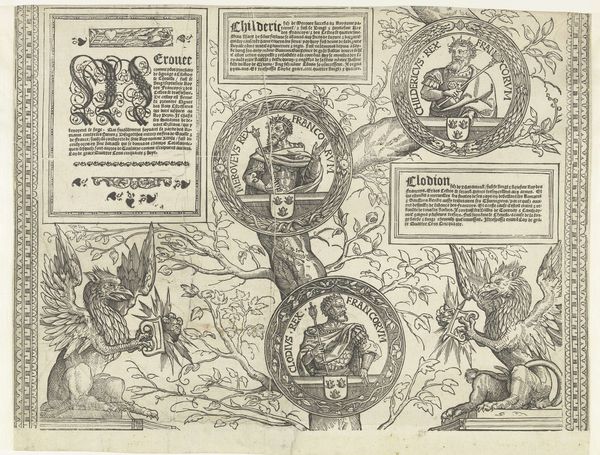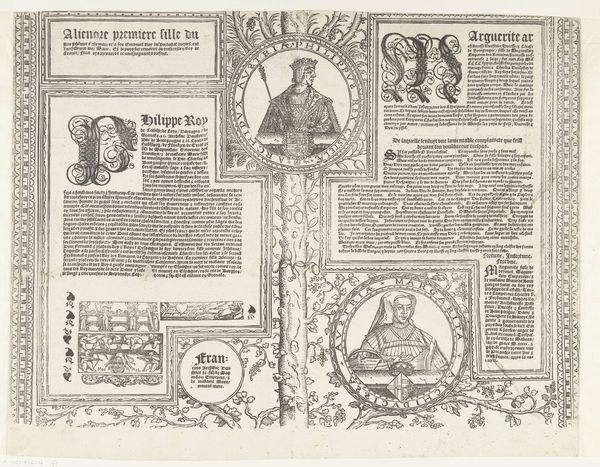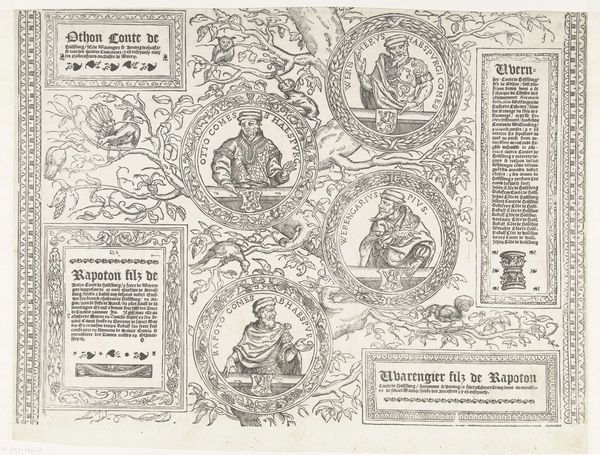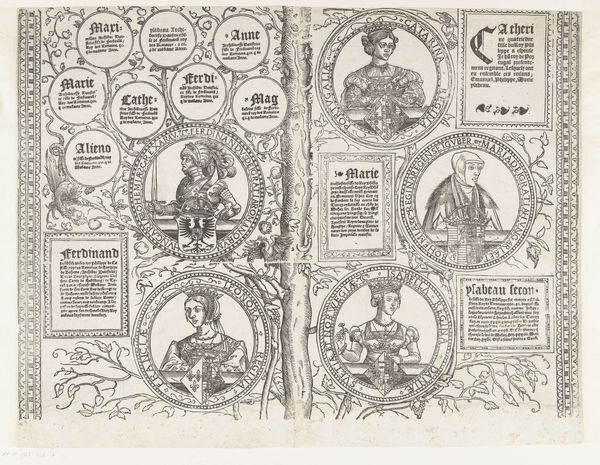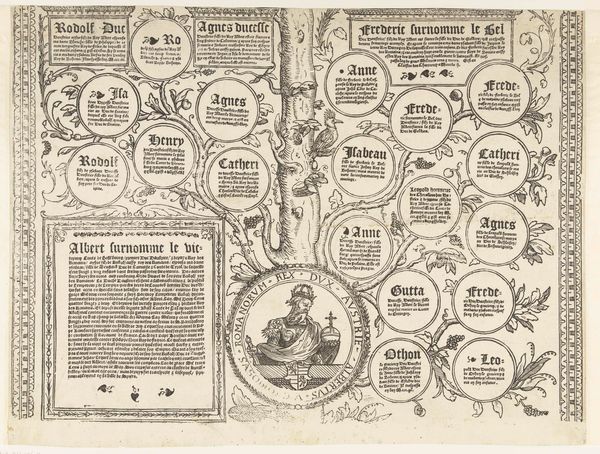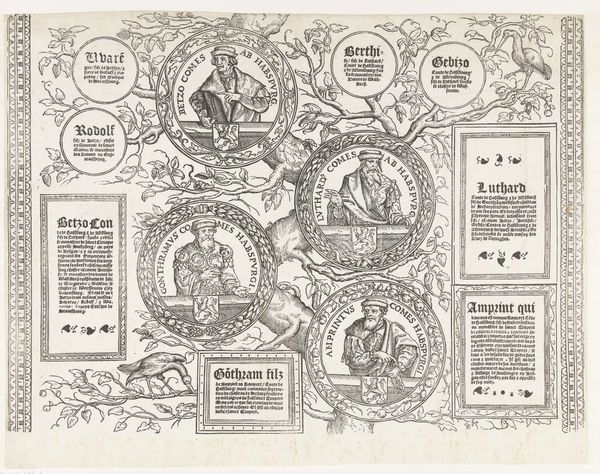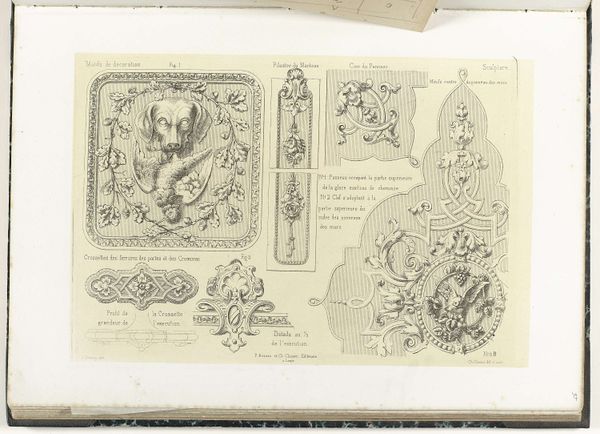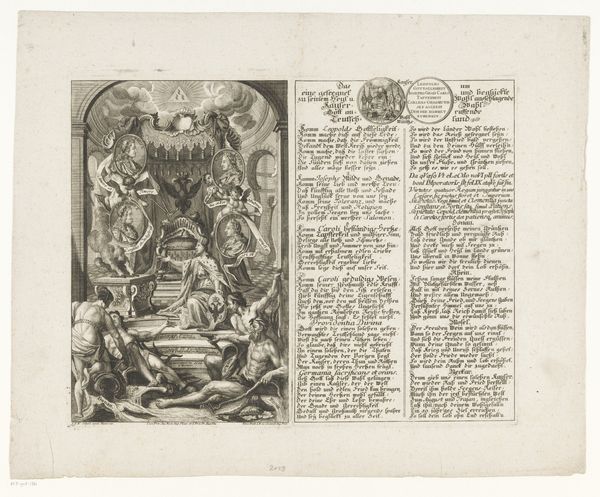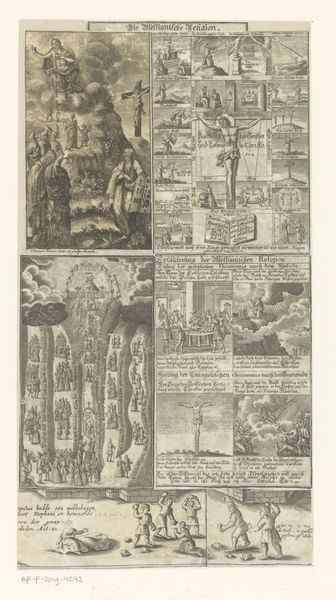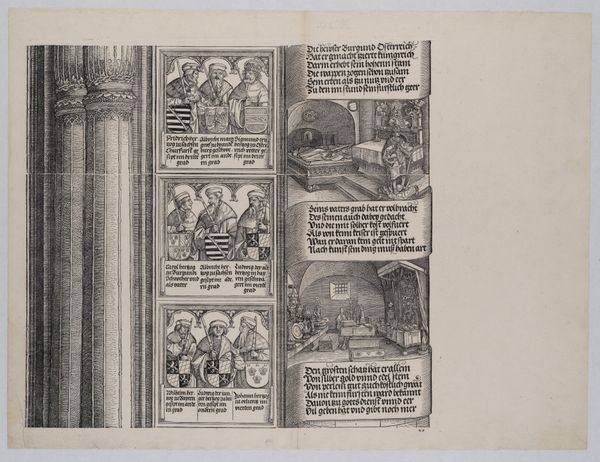
drawing, print, paper, ink, engraving
#
portrait
#
drawing
# print
#
paper
#
ink line art
#
11_renaissance
#
ink
#
history-painting
#
northern-renaissance
#
engraving
Dimensions: height 370 mm, width 473 mm
Copyright: Rijks Museum: Open Domain
Curator: Here we have “Stamboom van het Habsburgse huis, blad zes,” or "Genealogy of the House of Habsburg, sheet six," created sometime between 1533 and 1535 by Robert Péril. It’s an engraving, so ink on paper. My first impression? Regal, and a touch overwhelming, honestly. The detail! The sheer amount of text vying for my attention! It’s like stepping back into a very self-important history book. Editor: Genealogy, right. Immediately my mind jumps to labor. Look at the fineness of the lines, each perfectly placed to convey status and lineage. This wasn't a quick sketch; this was meticulously planned and executed, pointing to a specific artisanal skill and a wealthy patron. The paper itself speaks of early industrial processes – its production, trade, and use for this symbolic function. Curator: Precisely! You've hit on something key – symbolism. Each portrait, encircled in foliage, like precious jewels on a branch, speaks of a calculated presentation. They are neatly labeled "comes ab Habsburg," "dux Alemaniae" and similar descriptions that emphasize nobility. It makes you wonder about Péril's perspective on it all, right? Was he a believer, or simply a skilled hand for hire? Editor: A skilled hand certainly. Someone understood the socio-political clout imbued within each mark. Note also how the family's emblems are deployed, repeating and anchoring the message. A bit of early branding you might say, aimed at asserting their position at a time when such things weren’t guaranteed. Curator: A very astute point! There’s this… formality about it all, yet rendered with a beautiful, almost understated, elegance. I almost feel like I can smell the ink and feel the weight of the paper as it was lifted from the printing plate. And doesn't this obsessive cataloguing of lineage make you think of empire-building, of wanting to map and dominate every aspect? Editor: Absolutely! And those frames around the text – so decorative, yet so functional. They corral information, visually emphasizing control. Even the empty spaces around the portraits play into this idea of hierarchy; some get more breathing room than others, perhaps subtly indicating rank. There's such a power play here – not just on the level of the Habsburgs, but in the artistry itself, turning information into something permanent and material. Curator: Yes, a sort of declaration chiseled into the physical world. Standing before it, I think of echoes. The Habsburgs faded from their heights of power, yet the engraving lives on. Funny how sometimes, the artifact outlives the intention, showing us things about a specific period and what those folks found valuable. Editor: Exactly. Material persists, sometimes defying its intended function, and tells us volumes about who produced it and for what purpose. So much labor embedded in this one page. A powerful family history literally etched in time.
Comments
No comments
Be the first to comment and join the conversation on the ultimate creative platform.
